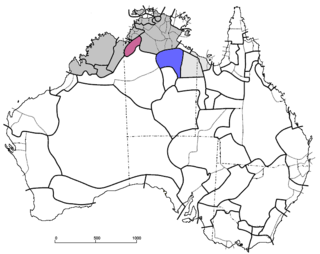Tsat, also known as Utsat, Utset, Hainan Cham, or Huíhuī, is a tonal language spoken by 4,500 Utsul people in Yanglan (羊栏) and Huixin (回新) villages near Sanya, Hainan, China. Tsat is a member of the Malayo-Polynesian group within the Austronesian language family, and is one of the Chamic languages originating on the coast of present-day Vietnam.
Eve Eliot Sweetser is a professor of linguistics at the University of California, Berkeley. She received her Ph.D. in Linguistics from UC Berkeley in 1984, and has been a member of the Berkeley faculty since that time. She has served as Director of Berkeley's undergraduate Cognitive Science Program and is currently Director of the Celtic Studies Program.

Hainanese, also known as Qióngwén, Heng2 vun2 or Qióngyǔ, Heng2 yi2, is a group of Min Chinese varieties spoken in the southern Chinese island province of Hainan and Overseas Chinese such as Malaysia. In the classification of Yuan Jiahua, it was included in the Southern Min group, being mutually unintelligible with other Southern Min varieties such as Hokkien–Taiwanese and Teochew. In the classification of Li Rong, used by the Language Atlas of China, it was treated as a separate Min subgroup. Hou Jingyi combined it with Leizhou Min, spoken on the neighboring mainland Leizhou Peninsula, in a Qiong–Lei group. "Hainanese" is also used for the language of the Li people living in Hainan, but generally refers to Min varieties spoken in Hainan.

Wintuan is a family of languages spoken in the Sacramento Valley of central Northern California.

The Mirndi or Mindi languages are an Australian language family spoken in the Northern Territory of Australia. The family consists of two sub-groups, the Yirram languages and the Barkly languages some 200 km farther to the southeast, separated by the Ngumpin languages. The primary difference between the two sub-groups is that while the Yirram languages are all prefixing like other non-Pama–Nyungan languages, the Barkly languages are all suffixing like most Pama–Nyungan languages.

The Ngurlun languages, also known as Eastern Mirndi, are a branch of the Mirndi languages spoken around in the Barkly Tableland of Northern Territory, Australia. The branch consists of two to four languages, depending on what is considered a dialect: Ngarnka, Wambaya, and often Binbinka and Gurdanji.
Malak-Malak, also known as Ngolak-Wonga (Nguluwongga), is an Australian Aboriginal language spoken by the Mulluk-Mulluk people. Malakmalak is nearly extinct, with children growing up speaking Kriol or English instead. The language is spoken in the Daly River area around Woolianna and Nauiyu. The Kuwema or Tyaraity (Tyeraty) variety is distinct.
Wambaya is a Non-Pama-Nyungan West Barkly Australian language of the Mirndi language group that is spoken in the Barkly Tableland of the Northern Territory, Australia. Wambaya and the other members of the West Barkly languages are somewhat unusual in that they are suffixing languages, unlike most Non-Pama-Nyungan languages which are prefixing.
The Hani language is a language of the Loloish (Yi) branch of the Tibeto-Burman linguistic group spoken in China, Laos, Myanmar, and Vietnam by the Hani people.
Murrinh-patha, called Garama by the Jaminjung, is an Australian Aboriginal language spoken by over 2,500 people, most of whom live in Wadeye in the Northern Territory, where it is the dominant language of the community. It is spoken by the Murrinh-Patha people, as well as several other peoples whose languages are extinct or nearly so, including the Mati Ke and Marri-Djabin. It is believed to be the most widely spoken Australian Aboriginal language not belonging to the Pama-Nyungan language family.

Wagiman, also spelt Wageman, Wakiman, Wogeman, and other variants, is a near-extinct Aboriginal Australian language spoken by a small number of Wagiman people in and around Pine Creek, in the Katherine Region of the Northern Territory.
Iau or Turu is a Lakes Plain language of West Papua, Indonesia, spoken by about 600 people. Most speakers are monolingual, and their number is growing. Other peoples in the western Lakes Plain area speak basic Iau. Iau is heavily tonal, with 11 tones on nouns and 19 simple and compound tones on verbs.
Jaminjung is a moribund Australian language spoken around the Victoria River in the Northern Territory of Australia. There seems to be a steady increase in the number of speakers of the language with very few people speaking the language in 1967, about 30 speakers in 1991, and between 50 and 150 speakers in 2000.
Nungali, or Yilngali, is an Australian language which is believed to be extinct. It was spoken in the Northern Territory of Australia, around the upper Daly River. Its closest relative is the Jaminjung language.
Gurindji is a Pama–Nyungan language spoken by the Gurindji and Ngarinyman people in the Northern Territory, Australia. The language of the Gurindji is highly endangered, with about 592 speakers remaining and only 175 of those speakers fully understanding the language. There are in addition about 60 speakers of Ngarinyman dialect. Gurindji Kriol is a mixed language that derives from the Gurindji language.
The Nungali, otherwise known as the Ilngali, are an indigenous Australian people of the Northern Territory.
The Ngaliwurru are an indigenous Australian people of the Northern Territory.
The Gudanji, otherwise known as the Kotandji or Ngandji, are an indigenous Australian people of the Northern Territory.
The Ngarnka, also Ngarnji or Ngewin, are an indigenous Australian people of the Northern Territory. They are often said to be the same as the Gudanji, one of whose alternative names is Ngarnji. However linguists distinguish between the language spoken by Ngarnka speakers and those who speak Gudanji.
The Jingili or Jingulu are an indigenous Australian people of the Northern Territory.




